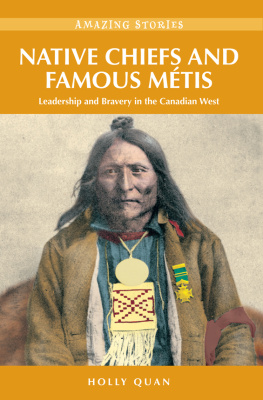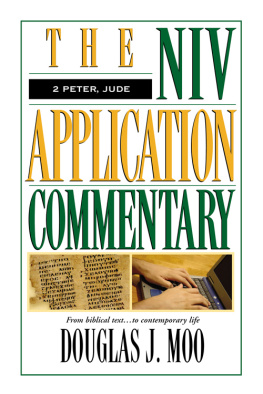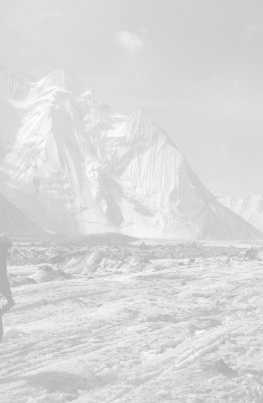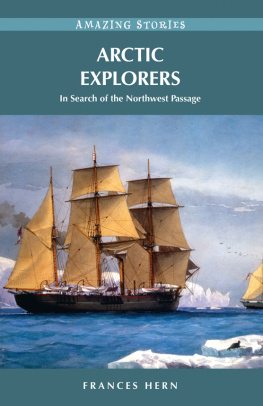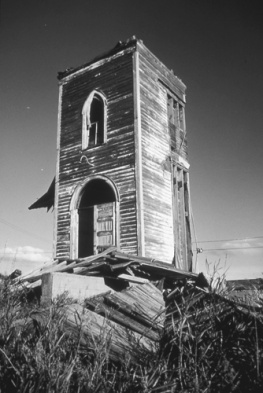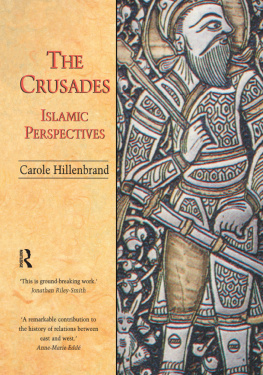About the Author
Holly Quan lives in the foothills of southwestern Alberta among the poplars and coyotes. Shes the author of the Amazing Stories title Sam Steele: The Wild West Adventures of Canadas Most Famous Mountie . Shes also written two guidebooks, in addition to writing magazine articles on travel, food, horses, marketing and whatever else piques her interest. When shes not busy on her novela work now many years in the makingshe loves to ski, ride, hike, swim, drink wine with her friends and howl at the moon.
Acknowledgements
The author acknowledges the following sources for the quotes contained in this book: the exceptionally detailed and insightful biographies of Big Bear and Crowfoot by Hugh Dempsey; the memoirs of Peter Erasmus, published as the book Buffalo Days and Nights , in addition to supporting information about the Palliser Expedition by noted historian Irene Spry; and the thoughtful, sympathetic interpretation of major events in the West as presented by DArcy Jenish in his book Indian Fall: The Last Great Days of the Plains Cree and the Blackfoot Confederacy . These sources, along with extensive background information from numerous other published materials, have helped me to form a picture of the dedication and courage with which these five remarkable menBig Bear, Poundmaker, Crowfoot, Peter Erasmus and Jerry Pottslived their amazing lives.
Bibliography
Cameron, William Bleasdell. Blood Red The Sun. 5th ed. Edmonton: Hurtig Publishers, 1977.
Dempsey, Hugh A. Big Bear: The End of Freedom. Vancouver: Douglas & McIntyre, 1984.
Dempsey, Hugh A. Crowfoot Chief of the Blackfeet. Norman: University of Oklahoma Press, 1972; Halifax: Goodread Biographies, 1988.
Dickason, Olive Patricia. Canadas First Nations: A History of Founding Peoples From Earliest Times. Toronto: McClelland & Stewart, 1992.
Erasmus, Peter. Buffalo Days and Nights. As told to Henry Thompson. Calgary: Fifth House Publishers, 1999.
Ewers, John C. The Blackfeet: Raiders on the Northwestern Plains. Norman: University of Oklahoma Press, 1958.
Fardy, B. D. Jerry Potts, Paladin of the Plains. Langley: Mr. Paperback, 1984.
Haig, Bruce. James Hector, Explorer. Calgary: Alberta Historical Resources Foundation; Detselig Enterprises Ltd, 1983.
Hollihan, Tony. Sitting Bull in Canada. Edmonton: Folklore Publishing, 2001.
Jenish, DArcy. Indian Fall: The Last Great Days of the Plains Cree and the Blackfoot Confederacy. Toronto: Viking Press, 1999.
Long, Philip S. Jerry Potts: Scout, Frontiersman and Hero. Calgary: Bonanza Books, Ltd, 1974.
MacEwan, J. W. Grant. Portraits From the Plains. Toronto: McGraw-Hill, 1971.
McHugh, Tom. The Time of the Buffalo. New York: Alfred A. Knopf, 1972.
Miller, J. R. Big Bear (Mistahimusqua): A Biography. Toronto: ECW Press, 1996.
Petrone, Penny, ed. First People, First Voices. Toronto: University of Toronto Press, 1983.
Ray, Arthur J. I Have Lived Here Since the World Began: An Illustrated History of Canadas Native People. Toronto: Lester Publishing; Key Porter, 1996.
Sluman, Norma. Poundmaker. Toronto: Ryerson Press, 1967.
Spry, Irene M. The Palliser Expedition: The Dramatic Story of Western Canadian Exploration 18571860. Saskatoon: Fifth House Publishers, 1963, 1995.
Contents
Copyright 2009 Holly Quan
All rights reserved. No part of this publication may be reproduced, stored in a retrieval system or transmitted in any form or by any meanselectronic, mechanical, audio recording or otherwisewithout the written permission of the publisher or a photocopying licence from Access Copyright, Toronto, Canada.
Published by Heritage House Publishing Co. Ltd. in 2009 in paperback with ISBN 978-1-894974-74-5.
This electronic edition was released in 2011.
e-pub ISBN: 978-1-926936-24-6
e-PDF ISBN: 978-1-926936-46-8
Cataloguing data available from Library and Archives Canada
Edited by Lesley Reynolds
Cover photo by Jarek Szymanski/iStockphoto
Heritage House acknowledges the financial support for its publishing program from the Government of Canada through the Canada Book Fund (CBF), Canada Council for the Arts and the province of British Columbia through the British Columbia Arts Council and the Book Publishing Tax Credit.

www.heritagehouse.ca

To Sue, who pursues her own vision of Spirit
Preface
This book is a different kind of adventure story. The stories here are true, though I have embellished them with my own imagination and interpretations of what may have been going through the hearts and minds of the people involved. They are tales of bravery and courage, of decisive action in times of terrible conflict. They are the stories of heroes, both leaders and ordinary men, who found themselves playing major roles in western Canadian history. What makes these stories different is the ring of sadness and loss.
The amazing stories in this book are no less amazing because they are tragic. These men and their great deeds have left their mark on Native culture and on the history of the West. They are inspiring stories, even though many end in sorrow, defeat, even death. They are the stories of great and wise men, and Im proud to share them with you.
Prologue
The iron stone had always been there... embedded in a hillside. To the Blackfoot and Cree of the western plains, the Iron Stone was the embodiment of powerful spirits, a source of strength, power, protection and luck. In spring, people travelled great distances to the Iron Stone. They burned sweetgrass. They sang songs of celebration. They asked the stone for good hunting.
In later times, geologists would say the Iron Stone was a meteorite that landed near the present-day town of Killam, Alberta. The Iron Stone weighed about 200 kilograms, one of the largest meteorites ever found in Canada.
To the Reverend George McDougall, the Iron Stone was a pagan symbol. With considerable effort, in the early spring of 1866 he had the stone dug from its resting place, loaded onto a wagon and carted to Victoria Mission, east of Edmonton. But that wasnt the end of the stones journey. McDougall sent it by boat down the North Saskatchewan River to Fort Garry and on to Toronto, to be proudly displayed on the lawn of the Methodist college where he was traineda trophy of his struggle to tame the people of the western plains.
That spring, when the Cree and Blackfoot came again to visit the Iron Stone, they were shocked to discover an enormous tragedy: their source of protection was gone. Their link with the buffalo spirits, their defence against evil and disasters, had mysteriously vanished. The elders predicted war, disease and starvation.
All their predictions came true.
CHAPTER
A Changing World
The First Nations and Mtis of the West traditionally honoured courage. Courage in battle when faced with fierce and relentless enemies. Courage to hunt buffalo, grizzlies, elk, eagles, bighorn sheep and more. Courage to face the intense heat of a summer drought or the bone-chilling cold of a prairie blizzard. Courage to seek visions through fasting and painful rites of passage, and courage to interpret and act upon those visions. And, more than anything, courage to confront sweeping changes that would shake their culture and traditional ways to the very core.
These are the amazing stories of five remarkable men, each of whom played a major part in the clash of cultures that occurred in the Canadian West. Three of these menCrowfoot, Big Bear and Poundmakerwere First Nations chiefs, while the other two, Jerry Potts and Peter Erasmus, were Mtis. All were revered, respected and sometimes feared for their leadership, insight and courage.

